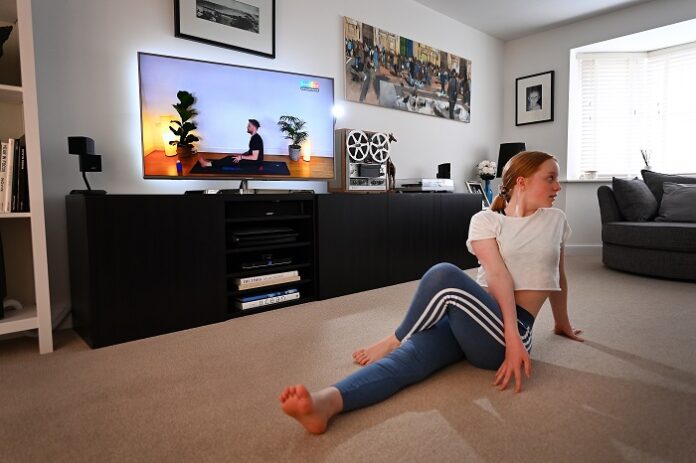Editor’s note: This is the second in a series on virtual wellness strategies.
*
After much of the American workforce moved remote earlier this year, several leading-edge employers recognized the need to shift their previously in-person fitness classes to virtual settings. But, the trend isn’t just being seen at companies with their own fitness centers–others are partnering with platforms that offer virtual wellness options for employees.
Wellness companies Wellbeats and Grokker, both of which offer virtual wellbeing components and partner with employers to provide them as a benefit for employees, say they have seen a big uptick in employers using their tools since the pandemic began in March.
Both platforms offered access to their tools for free at the start of the outbreak, which prompted a big boost in interest. With those promotions, Grokker added nearly 1,000 companies, while Wellbeats overall added 163,000 employees to its platform.
Related: ‘Virtual wellbeing is here to stay’
Biotech company Amgen, for instance, previously offered Wellbeats exclusively for remote workers, but expanded the program in wake of the pandemic. It had more than 4,000 downloads of the Wellbeats app in one week after expanding the program to all employees. Health and human services provider Maximus saw 4,768 employee logins and 10,048 class minutes in the first week of its Wellbeats launch in late April. Grokker also cites a “significant increase in demand,” including employers that expanded offerings to all employees and adding companies like Pfizer to its roster.
[click_to_tweet tweet=”#Wellness providers @Wellbeats and @grokker have both seen big upticks in #virtual wellness since March. How will this #wellbeing trend continue?” quote=”Tweet this story” theme=”style3″]
“They’re discovering the benefits of offering anywhere, anytime fitness content alongside nutrition resources for people who are doing more cooking at home or mindfulness classes for people who are feeling overwhelmed by everything that’s happening right now,” says Jen Zygmunt, Wellbeats’ chief revenue officer. In April, Wellbeats users recorded 5 million activity minutes, “double the 2.5 million minutes we see in a typical month,” Zygmunt says.
 The classes have been a big hit with employees, the companies say. They often are viewed as a way to normalize routines–and keep workers healthy–during the traumatic current situation. Plus, virtual, home options are especially important as indoor gyms and fitness facilities are some of the most dangerous places in terms of likelihood to spread the coronavirus, says Lorna Borenstein, CEO and founder of Grokker, which also counts Delta Airlines, eBay and Subway as clients.
The classes have been a big hit with employees, the companies say. They often are viewed as a way to normalize routines–and keep workers healthy–during the traumatic current situation. Plus, virtual, home options are especially important as indoor gyms and fitness facilities are some of the most dangerous places in terms of likelihood to spread the coronavirus, says Lorna Borenstein, CEO and founder of Grokker, which also counts Delta Airlines, eBay and Subway as clients.
“Ultimately, this is much bigger than missing a few workouts,” Borenstein says. “People are suddenly isolated indoors with no connection to the outside world, leaving them feeling stressed, anxious and unable to focus. And while they are worried about their jobs and trying to balance work and life, they are simultaneously struggling to maintain a healthy diet, not getting enough sleep and worrying about finances.
“None of this is going away any time soon,” she continues. “The only way to reliably and equitably reach employees where they are is through digital wellbeing solutions that treat the whole spectrum of wellbeing.”
While COVID-19 is requiring the majority of employees to stay at home, company leaders increasingly say they likely will continue to embrace work-from-home options. For instance, data finds that 82% of company leaders surveyed by research firm Gartner say their organizations plan to permit employees to work remotely at least part of the time even after the COVID-19 pandemic.
“People in benefits would always say how it’s important to meet people where they are at,” Borenstein says. “Well now that they are at home and working remotely, virtual fitness and wellbeing options are the only way to reach them. That is why they are here and here to stay.”
*
For part 1 on Best Buy’s transition to virtual wellness, click here.



